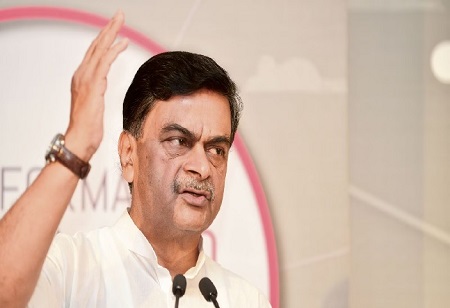
Union Power & Green Energy Minister R. K. Singh said that India would not hesitate to expand its thermal power generation capacity to meet the country’s growing energy requirements. Addressing a media event in New Delhi, Singh underscored the government’s commitment to strike a balance among renewable energy expansion and the necessity of thermal power. He emphasized that the government has been tirelessly working on ensuring access to energy, enhancing energy efficiency, promoting energy sustainability, and ensuring energy security as the four pillars guiding India’s energy sector trajectory.
While acknowledging the high expenses associated with clean energy storage, Singh highlighted the government’s efforts to promote the growth of Pumped Hydro Power Projects. These projects are expected to play a significant role in balancing renewable energy intermittency. “Huge capacities of Pumped Hydro projects are coming up. At the same time, we need to build batteries for grid storage. We need to have another PLI scheme for grid scale storage, so that we can augment capacity and have round-the-clock renewable energy. We will keep adding storage to ensure that demand goes up and investment keeps happening,“ he added.
Additionally, Singh stressed the need for battery storage for grid-scale renewable energy. To bolster capacity and ensure round-the-clock renewable energy availability, the Minister proposed the introduction of another Production-Linked Incentive (PLI) scheme focused on grid-scale storage. Singh expressed the government’s commitment to continuously enhance storage capacity to meet rising demand and attract investments. India has set ambitious targets for renewable energy, aiming to increase the share of non-fossil fuel capacity from the current 42% to 50% by 2030. However, Singh firmly stated that India will not shy away from augmenting its thermal power generation capacity to fulfill energy requirements. He predicted that India’s capacity will exceed 800 GW by 2030, showcasing a conservative growth rate.
The minister also highlighted India’s low per capita carbon emissions, which stand at around 2 tons compared to the global average of 6 tons. Despite being the world’s fifth-largest economy and home to 17% of the global population, India’s historical contribution to global emissions has been a mere 4%. The Minister emphasized the importance of transitioning to a Net Zero future and reducing carbon dioxide emissions to safeguard the environment for future generations.
He further affirmed that India’s robust economic growth will continue for the next 2-3 decades, and the government is dedicated to meeting the nation’s energy demands. The Minister emphasized the government’s focus on expanding the charging infrastructure to support electric vehicles and reducing dependence on foreign energy sources. The minister stated the prioritization of renewable energy as a key area of development, aiming to establish at least 5 million tons of green hydrogen capacity by 2030. Additionally, Singh highlighted the potential for diversification of supply chains using technologies like sodium-ion batteries and the export of around 50 GW of battery storage capacity.
We use cookies to ensure you get the best experience on our website. Read more...